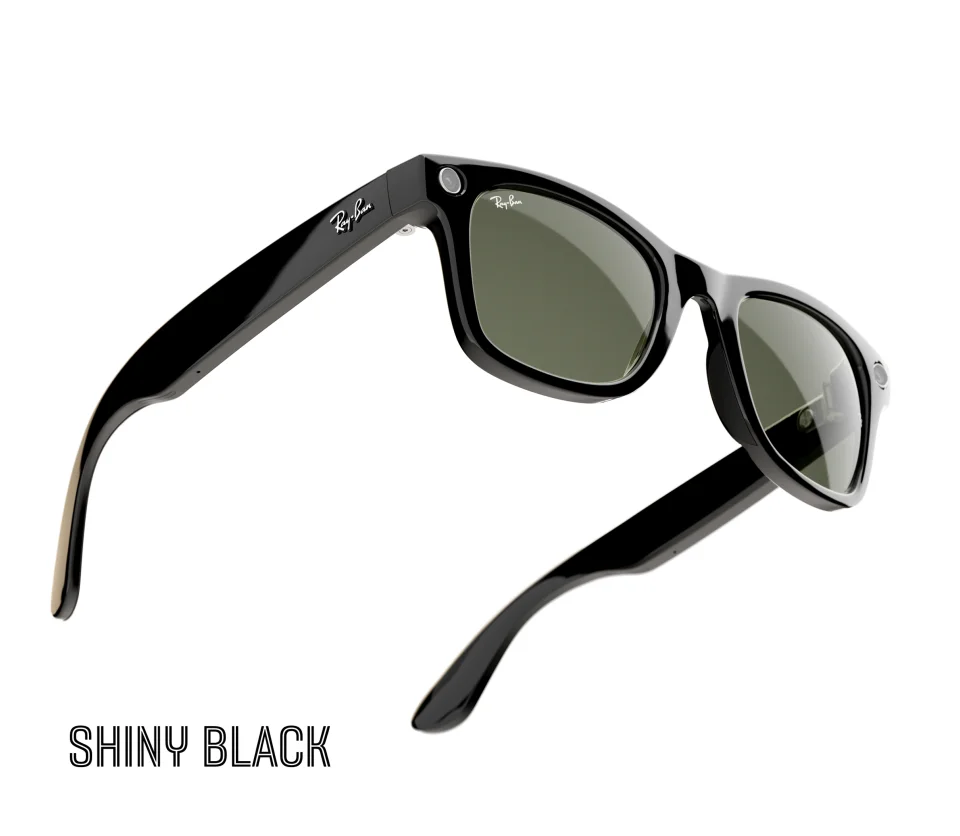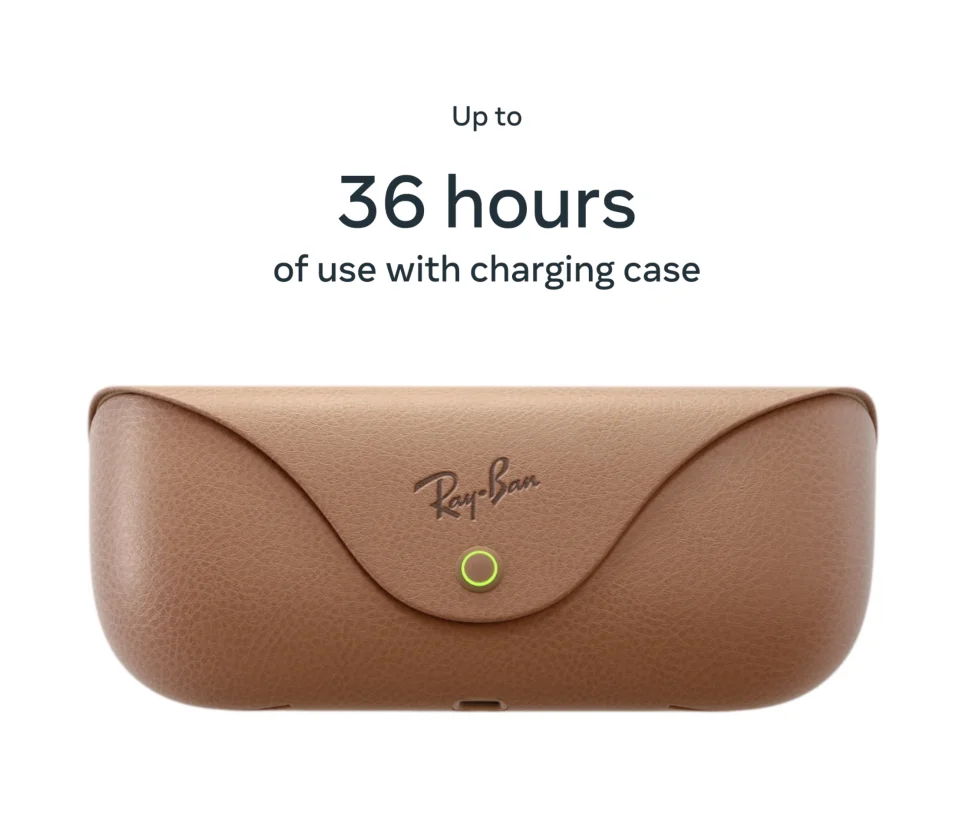Ray-Ban Meta smart glasses offer an elegant upgrade to their Stories counterparts, boasting camera and speaker technologies as well as augmented reality and AI into sunglasses frames that look natural – ideal for use with any image or video sharing apps.
These devices feature Qualcomm chips and have been redesigned to more closely resemble classic Ray-Ban sunglasses in terms of case and appearance. Furthermore, there are more frame colors (including transparent) and lens choices such as sun, polarized, clear and transitions available.
Features
Meta has been around for several years and continues to strive to make its augmented reality glasses more than merely glorified selfie takers. Now, its second iteration rebrands them under Stories’ brand, offering new livestreaming features, image quality upgrades, and other upgrades.
The cameras have been upgraded to 12 megapixels and the system now automatically uploads content directly to Instagram and Facebook. Furthermore, you can use Facebook View’s video editor app to edit videos you’ve shot with the glasses, adding special effects such as slow-mo. Plus there’s even an earpiece microphone so you have hands-free access to calls, texts, music – keeping your phone safely tucked into your pocket while still staying informed with calls, texts or music!
Audio leakage was one of the major drawbacks to the original Stories glasses, so that should be resolved in this updated model as well. According to their maker, they’ve improved directional audio so sound stays focused on your ears; we need to test that theory out first in noisy environments before declaring victory here.
Battery life has also been increased to six hours of mixed usage and the case now holds eight additional charges, totalling 36 hours of use. Furthermore, new lenses are lighter and more durable; plus there are two frame styles and five color choices to create over 150 possible design combinations!
One change from its previous iteration is an additional, more prominent capture LED on the left lens that illuminates when recording video or taking photographs. This should help address privacy concerns for those who don’t wish to be recorded without knowing, and will prevent you from recording if this light becomes blocked by anything like clothing or foliage.
Are you curious to experience Ray-Ban Meta smart glasses for yourself? The shipping date is scheduled for Oct 17 and they’ll be available here.
Design
With the launch of Ray-Ban Meta smart glasses, Ray-Ban has addressed some of these concerns and made several enhancements in other areas. Their new frames have been reduced in size for easier fit on your head while remaining 32% lighter than its predecessors. Furthermore, these smart glasses run apps developed on Qualcomm Snapdragon AR1 Gen 1 Platform SoC that is capable of processing images and video, streaming music over Bluetooth as well as supporting hands-free voice controls using either their Android or iOS apps.

A new LED indicator on the left frame adds some symmetry with the camera on the right and illuminates whenever you capture photos or videos, alerting others of your recording activity and making it harder for people to hide it from recording. Furthermore, microphones have been upgraded, with five built-in microphones around its chassis – including one near your nose for accurate capture when making calls and listening to music and podcasts.
Shipping begins on Oct 17 and features both the original Wayfarer frame design as well as an all new Headliner model, including various colors, lenses (prescription, sun, transitions polarized and clear) and transparent options for customization.
Specs
If you’re in search of smart glasses that you could wear everyday as sunglasses, the Ray-Ban Meta smart glasses may be exactly what you’re searching for. Combining an ordinary pair of frames with camera, speaker and other features – such as offering first person perspective photos/videos as well as good audio – they offer unique first person perspectives while audio quality remains good enough to meet most people’s standards with augmented reality and AI.
Ray-Ban Meta smart glasses boast several upgrades from their predecessor. They’re lighter with improved weight distribution and feature a larger touchpad on the right temple; in addition to recording 1080p HD video and taking 12 megapixel still images.
Notably, these glasses incorporate voice activation and an LED indicator on the left to notify others you’re recording. You can connect the glasses via Bluetooth to your phone to play back any videos or music recorded. Though not groundbreaking in its functionality, this feature makes the glasses easier to use.

Your phone can also control the glasses through microphone and speaker control to answer calls and play music, using microphones positioned around their frame to detect your voice from anywhere in front of you for hands-free calling; there are five built-in mics including one near your nose to record spatial audio; while custom designed stereo speakers boast 50% louder volumes with twice as much bass, playing immersive audio captured with mics.
Ray-Ban Meta smart glasses now allow users to seamlessly capture and share livestreams to Facebook or Instagram directly from them without the need for third-party apps. Furthermore, these smart glasses automatically send photos or videos directly to contacts of your choice; giving you full control over who receives and where the content goes.
Ray-Ban Meta smart glasses may not have the sophistication of an augmented reality headset, but they do look more stylish than Snapchat Spectacles; moreover, they’re much more comfortable to wear than many other smart glasses I’ve tried on – their only real drawback being an expected battery life of approximately six hours with normal usage and four when streaming media content.
Pricing
These glasses will cost $300 and begin shipping Oct. 17 across America, Australia, and Europe. Available models will include Ray-Ban’s iconic Wayfarer frames with various colorways as well as clear lenses.
The glasses boast a 12-megapixel ultra-wide camera capable of taking quality images and recording 1080p video, ideal for vertical content creation on social networks such as Facebook and Instagram. When starting livestreams on these networks, when starting a stream a white light pulses around the lens to indicate you are recording.
To keep mobile phones out of users’ way, these glasses feature upgraded audio with microphones designed to focus exclusively on your ears and prevent sounds from leaking out or being picked up by others nearby. Furthermore, speakers are now 50 percent louder than in previous Ray-Ban Stories models.
Like their originals, these new glasses are intended to appear like eyewear before concealing any tech features. They feature a switch that blends in seamlessly with the inner hinge, an LED on the right that flashes to indicate power or connection status and speakers color-matched to each frame (I tried on one with green-matching speakers).
As opposed to Google Glass, which had an awkward attachment for its charging cable, these new glasses feature magnetic docking of pogo pins inside their case for easy docking and charging. Fully charged up in three hours of casual wear or four to five hours when taking photos/video.
Question is whether this new approach will be sufficient to convince parents, friends and non-techie acquaintances alike to try them on. Ray-Ban Stories failed to capture public imagination; according to one report only one-third of owners ever started wearing them. A major hurdle may be the need for an iPhone for set up and download content capture which may put off many potential purchasers; if Ray-Ban Meta glasses can make the experience simpler they might just find favor with more users.


